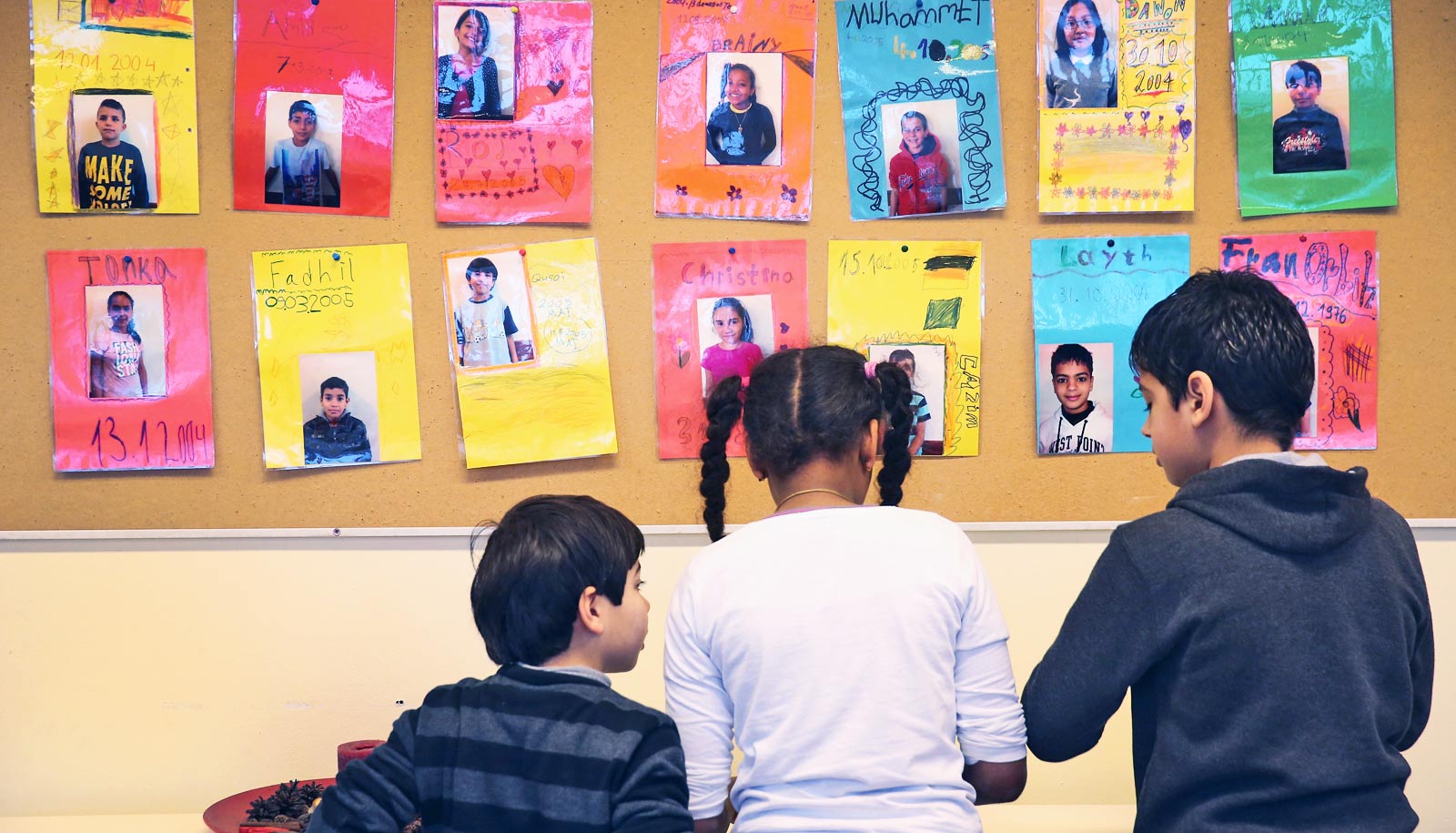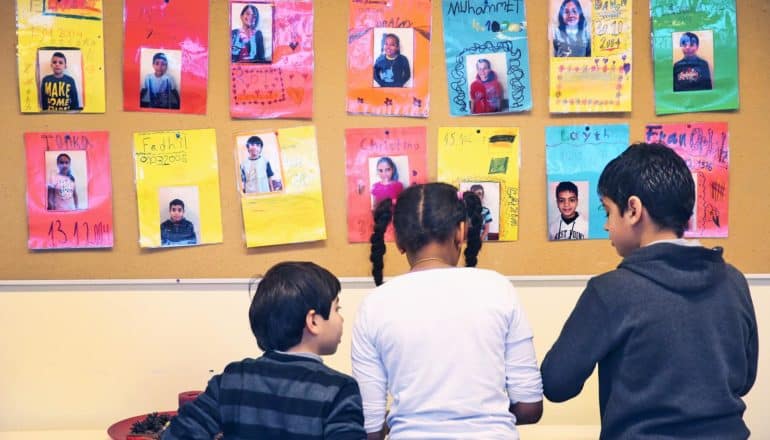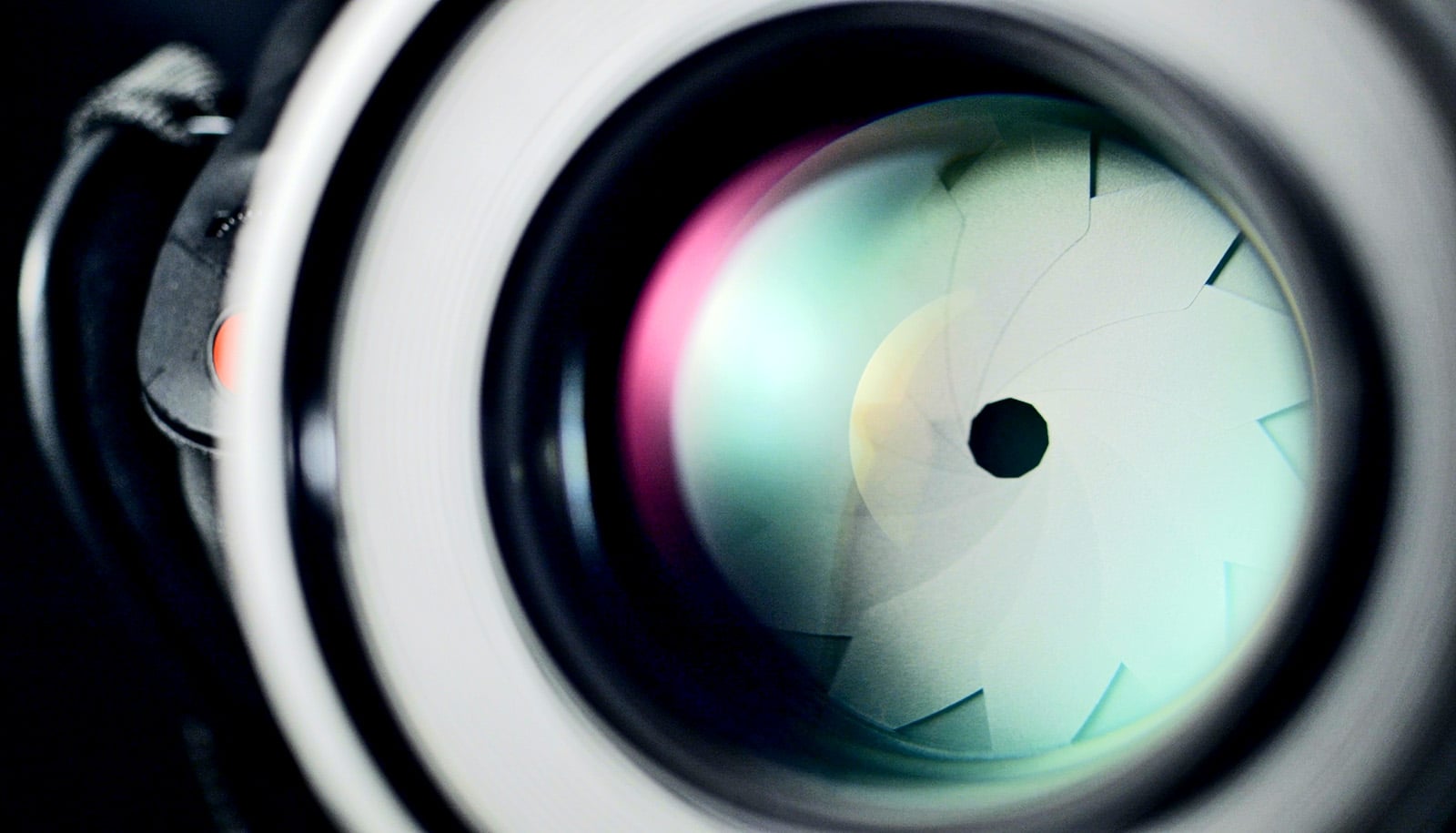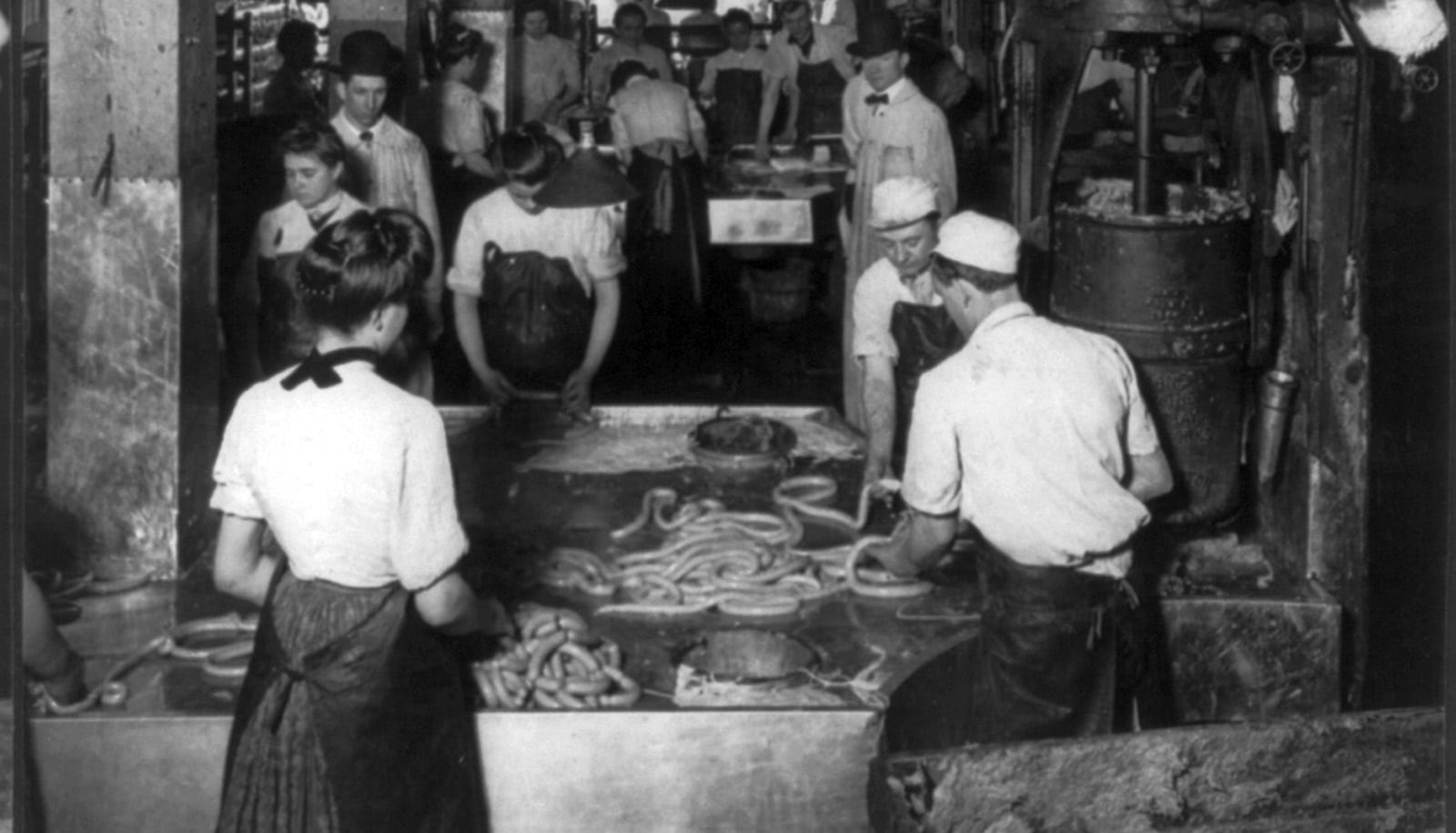
Children play under photos of fellow pupils at the "Welcome Class" for immigrant children, including children of migrants and refugees, at the Leo-Lionni-Schule primary school in 2016 in Berlin, Germany. (Credit: Sean Gallup/Getty Images )
News pics of refugees don’t tell the whole story
"There needs to be a greater discussion on telling the broader story—a migrant's story doesn't end once they cross the sea or make it through the border."

A majority of photos depicting the 2015 Syrian refugee crisis portrayed the refugees as victims, research shows.
This finding has implications for how the public perceives migratory events, including the influx of migrants arriving at the US-Mexico border. The study also underscores the responsibility of photojournalists to convey a broader story with their pictures.
“Photojournalists and news organizations have a big opportunity to tell a greater story.”
For example, one of the most devastating images from 2015 shows a three-year-old boy, Alan Kurdi, facedown and unmoving on a beach in Turkey. Alan had drowned during an attempt to escape Syria, and the image sparked outrage and concern worldwide over the refugee crisis in Europe. It also highlighted the power a single image can have.
“Typically, powerful or shocking photos of migrants get the greatest reaction,” says Keith Greenwood, associate professor in the University of Missouri School of Journalism. “However, those potentially dark moments don’t always capture the full scope of the event. Photojournalists and news organizations have a big opportunity to tell a greater story.”
Greenwood and alumnus TJ Thomson analyzed more than 800 photos from the 2015 Syrian refugee crisis that photojournalists submitted for the 2016 Picture of the Year International competition. They found that more than 600 of the photos depicted the migrants as victims dependent on foreign aid, including refugees being detained or waiting in a migrant camp.
Only 186 of the photos showed the refugees with some amount of agency, such as refugees looking for food or bathing themselves. Out of the entire collection, only a single photo showed refugees in an educational setting.
The public uses photographs to make sense of news stories. If someone only sees images of migrants clashing with police at a border, for example, they might be more inclined to think the situation is more militarized than if they had seen photos of migrants peacefully waiting in line to go through a border checkpoint. Greenwood adds, however, that individuals viewing images tend to accept or reject them based on their own personal belief system.
“Research shows that people view photos through their own frame of reference and judge them accordingly,” Greenwood says. “For example, a person who believes migrants are a threat might find that a photo of a migrant throwing tear gas at a border officer enforces their opinion, but they might reject an image of a migrant shown in a more peaceful light as a one-time thing.”
While assignments often limit photojournalists, Greenwood recommends that news organizations take note of how their visual storytelling is framing a migration event and work to present the bigger picture through daily photographs made in the field.
“There needs to be a greater discussion on telling the broader story—a migrant’s story doesn’t end once they cross the sea or make it through the border,” Greenwood says. “If news organizations leave out what happens to migrants once they’ve settled in to a new place and are working to make a new life, they might be missing out on a huge opportunity.”
The study appears in the International Communication Gazette. Thomson is an alumnus of the Missouri School of Journalism and a lecturer in digital journalism at Queensland University of Technology in Australia.
Source: University of Missouri
The post News pics of refugees don’t tell the whole story appeared first on Futurity.
Share this article:
This article uses material from the Futurity article, and is licenced under a CC BY-SA 4.0 International License. Images, videos and audio are available under their respective licenses.
Related Articles:
Health stock photos skew too young, light-skinned, rich
Feb. 2, 2023 • futurityShocking Chicago meatpacking pics shifted public policy
Feb. 18, 2020 • futurityLinks/images:
- https://doi.org/10.1177/1748048519833515
- https://munews.missouri.edu/news-releases/2019/0529-more-than-victims-migration-images-provide-a-chance-to-tell-a-greater-story/?utm_campaign=290626_05-29-19%20Greenwood%20migrants&utm_medium=email&utm_source=email&dm_i=42N5,688Y,2M83OD,NI2Y,1
- https://www.futurity.org/photojournalism-images-refugees-2075062-2/
- https://www.futurity.org


